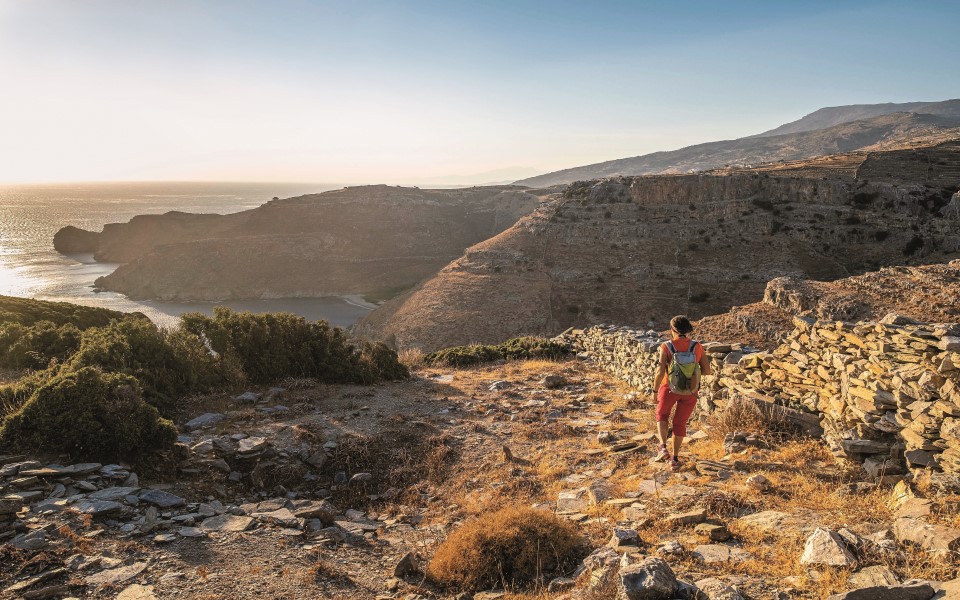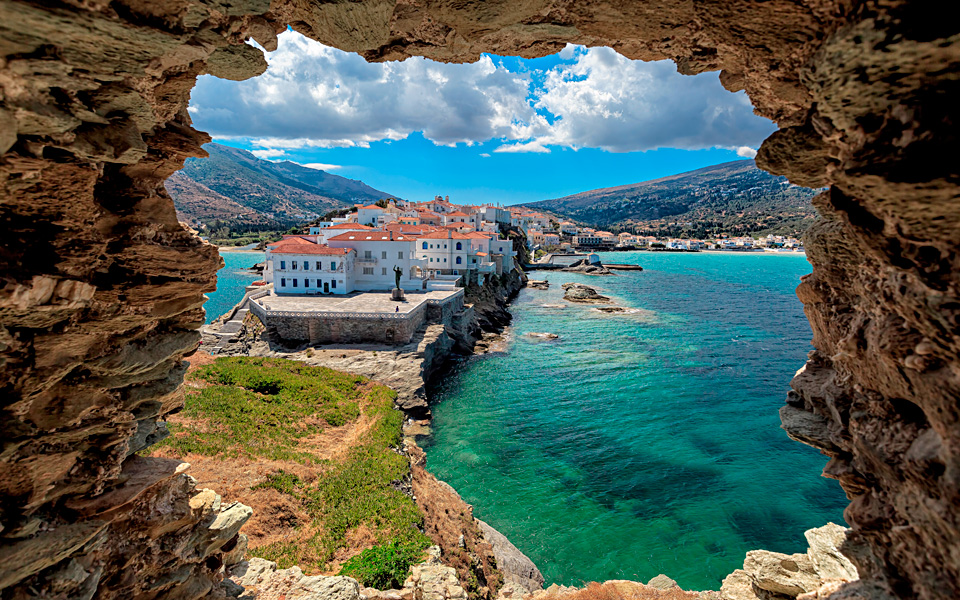5 Epic Island Hikes in Greece for Spring...
This spring, five majestic peaks across...

Cleared and signposted hiking trails forming a network of 160km crisscross the island of Andros.
© AFP/ Visualhellas.gr
The second largest of the Cyclades islands, Andros is unquestionably the most diverse. Every year art lovers make the pilgrimage to Hora to view the latest exhibition at the Goulandris Museum of Contemporary Art, which has showcased retrospectives of such names as Picasso, Klee, Rodin and Matisse, and to visit the Kydoniefs Gallery, which presents notable contemporary Greeks. Others come, again and again, for its gorgeous beaches, about 70 of them, some of which remain blissfully underused even in August. And still others are discovering Andros for walking tours, at any time of the year.
As someone who’s had a home on the island since 1989, I’ve enjoyed all these “attractions” and the incredible contrasts between, say, the dry, windswept, typically Cycladic western third, some high bits in the middle that are thick with deciduous forests, apple trees and primroses, the Italianate landscape with its Venetian-era mansions closer to Hora, and the gentle eastern third, punctuated with dovecotes and whitewashed hamlets. Almost everywhere there’s an abundance of water – so absent in the Aegean – swift-flowing rivers, fountains, springs and even waterfalls.

Chora of Andros
© Shutterstock
In the old days, we used to puzzle out routes on rudimentary maps and hiked up the highest mountain, walked the ridge from Ammolochos to Ano Gavrio, followed the thousands of steps down along the river from the ancient capital Paleopoli to the submerged jetty at the coast, investigated the castle above Korthi and the watermills lining the river below it.
Nowadays, however, would-be hikers have a more reliable resource, Andros Routes. In 2012, a group of volunteers got together to restore the network of paths used for centuries before roads were built. Since then they have cleared and signposted over 160km of the 300 existing paths, including the Andros Route, a 100-km continuous path across the length of the island. They have a website (androsroutes.gr) and a reliable map, and hold a hiking festival every autumn, which draws people from all over Europe and points as far away as Colorado. In 2015, Andros was the first island in Europe to have its routes recognized by the European Ramblers Association, which declared the Andros Route one of the Leading Quality Trails–Best of Europe.
The walks bring hikers into direct contact with the numerous wildlife sanctuaries on the island, while the hiking festivals engage them with the locals, who cook for them, share their homemade preserves and coax them into joining Greek dances. It’s an inspiring undertaking, with everything managed by volunteers, and it brings the inhabitants of remote villages into contact with visitors in a way that conventional tourism never has or will.
This spring, five majestic peaks across...
From Samos to Crete, we've selected...
Discover Leros, a hidden Greek island...
Igor Borisov turned Kimolos into his...